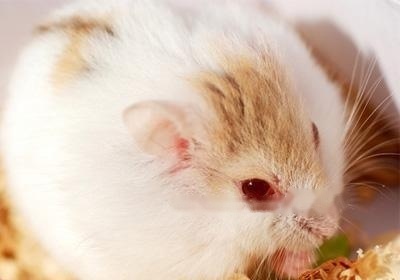
Amber Hamster
Length: 10-12cm
red-belliedSquirrel (red-bellied squirrel), "Benevolent or List of Terrestrial Wild Animals of Important Economic and Scientific Research Value, mainly inhabiting dense forests and preferring early morning and evening activities. The appearance is similar to that of the rock squirrel, with no tufts on the ears, bright body color, and a large tail. The face is fair, the eyes are shining, the body is strong, the limbs are light, very agile, very alert. There are about 15 subspecies in China, and their body shapes and colors are quite different.
Chinese name: Red-bellied squirrel
Latin name: Callosciurus erythraeus Pallas
Alternative names: red-bellied squirrel, Diao bell, big-tailed squirrel, red-breasted squirrel, Black Eyes
Kingdom: Animalia
Class: Mammalia
Order: Rodent
Family: Squirrel
Distribution area: All provinces in southern China are distributed. North to Hebei, Gansu, west to Sichuan.
Natural enemies: cats, owls and snakesetc.
Harmful crops: masson pine, fir bark
Red Abdominal Squirrel The average adult body length is 190mm to 250mm, and the tail is large. Its length is equal to or slightly larger than its body length. The forefoot is bare, with 4 finger pads and 2 palm pads; the big toe degenerates into a wrinkled skin fold. The back palm is bare, with 5 toe pads and 2 palm pads. The back of the body is olive-yellow; the base of the hair is gray-black, and the ends of the hair are black-yellow or all black; therefore, small black-yellow spots can be seen. Abdominal hair brownish gray or brownish yellow; hair base dark gray, hair tip light brown. The back of the tail hair is the same color as the dorsal and ventral hair of the body, but the rear edge is black and yellow. The cheeks and muzzle are pale greyish-yellow. The inside of the limbs are ochre.
The cranial roof of the skull is enlarged, the muzzle is narrow and the zygomatic arch is straight. The interorbital space is wide, and its width is greater than the length of the nasal bone; the base of the supraorbital process and the orbital rim are elevated; the auditory bulb is protruding, but not large. There are 3 protrusions behind the center of the occipital bone. Herringbone ridges are prominent. The incisors are flat and narrow. The first upper premolars are small cylindrical, significantly smaller than the other teeth; the molars are low-crowned teeth, with a humeral process on the chewing surface, but no central column.
Mainly feed on plant seeds and fruits. Nuts and berries such as ficus seeds, yellow bark, mangosteen, Bengalurus, kapok seeds, plantains, etc. are all fond of eating, and they are addicted to wild lychees. Often gathers with other squirrel species to forage without interfering with each other. Sometimes also prey on insects, lizards, chicks, bird eggs, etc. .
Red-bellied squirrels are mostly active in the early morning and evening. Changes in weather often change its activity pattern, and activities are frequent after rain. Individuals living at the top of the mountain were later in activity. Bamboo and broad-leaved trees are mixed in dense forests and places with few vines are conducive to activities. Most of the activities in the trees, rarely go to the ground. Quick action and flexible jumping. Activities have a certain route. Nests in tree trunks, tree holes or branches, about 0.5m from the top of the crown. The nest is filled with soft branches, weeds or dead tree fibers. The diameter of the nest is about 25cm to 35cm, and the structure is rough. Sometimes abandoned bird nests are also used, and even nests are built in the eaves and ceilings. In winter, the body hair is replaced by soft and rich winter hair, and the summer hair is shed in April and May of the following year.